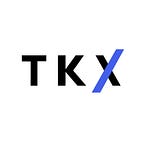Ethena: Delta Neutral Stablecoin | TKX Weekly
by @Guaaronnnn
editor @FriedWagyuu
Stablecoins have become a cornerstone in the decentralized finance (DeFi) landscape, offering a buffer against the volatile nature of cryptocurrencies. However, the majority of these stablecoins, such as USDC, USDT, and DAI, are still anchored to traditional banking systems, creating a contradiction in a sector that strives for complete decentralization.
In stablecoins, there exists a notable challenge often referred to as the ‘Stablecoin Trilemma’. This concept emphasizes the difficulty of simultaneously achieving three crucial factors: resistance to censorship, easy scalability, and price stability. While some stablecoins excel in one or two of these areas, it is challenging to find one that performs well in all three. This difficulty highlights the challenge of creating a stablecoin that meets the diverse needs of decentralized finance. Today, we are going to explore a stablecoin protocol that might address the trilemma — Ethena Labs.
Intro
Ethena Labs is a decentralized stablecoin protocol built on Ethereum, providing a crypto-native solution for money that isn’t reliant on the traditional banking system. Their flagship product, the USDe stablecoin, promises to be the first censorship-resistant, scalable, and stable crypto-native solution for money. It is backed by delta-hedging staked Ethereum collateral and is not just a currency, but also an ‘Internet Bond’ — a globally accessible and permissionless dollar-denominated savings instrument.
Ethena recently announced securing $6.5 million in funding for USDe, which further solidifies its position in the market. This seed round was led by Dragonfly and joined by industry stalwarts like Arthur Hayes and major crypto exchanges, which underscores the industry’s faith in Ethena’s vision.
Mechanism
When users deposit LST, ETH, or USD into Ethena, the collateral is deployed directly to an “off-exchange” custody. Ethena then finds the most efficient funding rate to execute 1x short ETH perps off-chain through this custody. USDe will then be issued to users after ensuring that their position is delta-neutral.
Through such a mechanism, USDe, crafted through delta-neutral derivative positions against staked Ethereum, adeptly addresses the Stablecoin Trilemma. It achieves scalability by using derivatives, allowing 1:1 collateralization without over-relying on collateral. Stability is ensured as USDe is only issued when the initial balance is perfectly hedged through short perpetual positions. Finally, to improve resistance to censorship, we detach from traditional banking and use on-chain, transparent crypto collateral storage that can be audited 24/7.
Negative funding rates
Negative funding rates pose a significant concern for USDe. When the ETH perpetual funding rate turns negative, it threatens to erode the principal balance of USD below its pegged value of $1. This erosion stems from continuous funding payments drawn from the collateral balance, which can diminish its overall value.
Why negative funding rates won’t be a persistent issue:
Ethena Labs’ research and mechanisms provide a defence against the challenges of negative funding rates:
- Historical resilience: ETH’s perpetual funding rates have historically leaned towards a positive bias, even amidst market downturns.
- Natural market behaviour: ETH often displays a contango trend, where futures prices surpass expected future spot prices, reinforcing the tendency for positive funding rates.
- Temporary negative rates: Past data indicates that negative rates, on the rare occasions they arise, are fleeting and quickly revert to positive figures.
- Staking yields buffer: stETH yields, averaging between 4–6%, serve as a protective buffer during brief periods of negative funding.
- Insurance fund: Ethena Labs has instituted an insurance fund for USDe, offering an added layer of protection against extended periods of negative excess spread. This fund is continually fortified by channelling a portion of the positive yield back into it.
- User behaviour as a corrective mechanism: USDe’s design factors in user behaviour. When faced with negative funding rates, it prompts users to reconsider their holdings. As they redeem USDe, the protocol adjusts the short hedges, aiding in the restoration of positive funding rates.
Thoughts
While stablecoins like USDC and USDT externalize all the risk of the product onto users and then internalize all the yield to themselves, USDC and USDT still own a majority of the market share. USDe, a decentralized, highly capital-efficient, and stable stablecoin, is definitely worth keeping an eye on.
Other than the negative funding rate concern, the other concern is growth might be limited by CEX.
The growth of USDe is closely linked to the availability of short positions for perpetual swaps to hedge. It may not be problematic if the size is a couple of hundred million, but it becomes a problem when it exceeds billions. On the bright side, Ethena’s investors include many CEXs, which will be helpful, and the recent announcement of collaboration between Synthetix and Ethena is also a positive development.
Reference
https://mirror.xyz/0xF99d0E4E3435cc9C9868D1C6274DfaB3e2721341/2gfr0qaFvZ8UxPaBvPPAZgwdcbssR_cyg5svqj1YGrY
https://twitter.com/leptokurtic_/status/1681598445302468609
https://twitter.com/leptokurtic_/status/1682781070121652224
About TKX CAPITAL
Website: TKX.CAPITAL
Twitter: @TKXCAPITAL
Build with us: HI@TKX.CAPITAL
Note: TKX CAPITAL do not offer any financial advice for retail investors.
